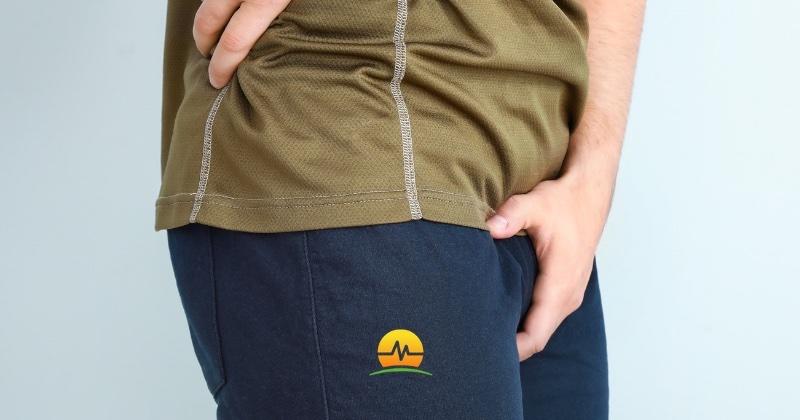When we feel the dreaded pulling pain in the groin area, especially after some vigorous activity, it is easy to jump to the conclusion that we have a groin hernia. This is medically known as an inguinal hernia – the most commonly repaired hernia in the US. This stands to reason as statistics show that up to 25% of all men will develop a groin hernia in their lifetime.

However, a groin hernia is not the only possibility when it comes to pain down there. Relatively unknown among patients is what’s called Athletic Pubalgia or more commonly, a sports hernia. This is not a hernia in the traditional sense. It is not a hole in the abdominal fascia with fat or organ tissue pushing through. Rather, it is a tear in the muscles, tendons or ligaments of the groin that causes pain, often significant, in the same general area. In contrast to a true inguinal hernia, athletic pubalgia does not result in a visible or palpable bulge.
So, Is It a Sports Hernia or Inguinal Hernia?
Before you conclude the pain comes from a sports hernia, do understand that they are much less common than groin hernias and far-less-problematic pulled muscle or groin strain. Interestingly, if you do have athletic pubalgia and continue to strain the groin area, it may actually develop into a true inguinal hernia. The only way to know what you have is by scheduling a consultation with an experienced surgeon. Beyond your medical history, we will perform a physical exam as well as run some imaging tests, if necessary, to see what’s going on.
Causes of Athletic Pubalgia
The most common cause of athletic pubalgia is participating in sports that involve quick changes in direction. Most commonly those who play baseball, football, hockey, soccer and basketball will have a higher risk. Less commonly, golfers may also develop the condition. The risk of developing athletic pubalgia increases with age.
Treatment for Athletic Pubalgia
Treatment largely depends on whether the area that has been damaged heals on its own. Athletic pubalgia can be mild or moderate, in which case it often resolves after a couple weeks of rest, icing, anti-inflammatory medication and appropriate care. Physical therapy is often needed before returning to full athletic activity. However, severe cases may not heal – this is more likely if the patient continues to perform the same activities despite the pain. In these cases, the definitive treatment is a mesh-based repair, much like an actual inguinal hernia
As with any hernia surgery, it is important to employ an experienced general surgeon that can implement the appropriate treatment option for your particular situation. Most patients who undergo a surgical repair of athletic pubalgia or even inguinal hernia often will return to their former lifestyle after 6-12 weeks of appropriate postoperative care, surgical rehab and time off.
Contact our office to schedule a consultation with one of our experienced surgeons and learn more about whether your groin condition is a simple pull, Athletic Pubalgia or an inguinal hernia.
